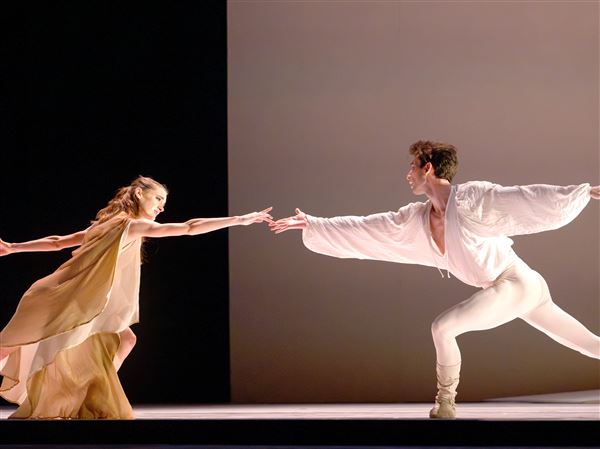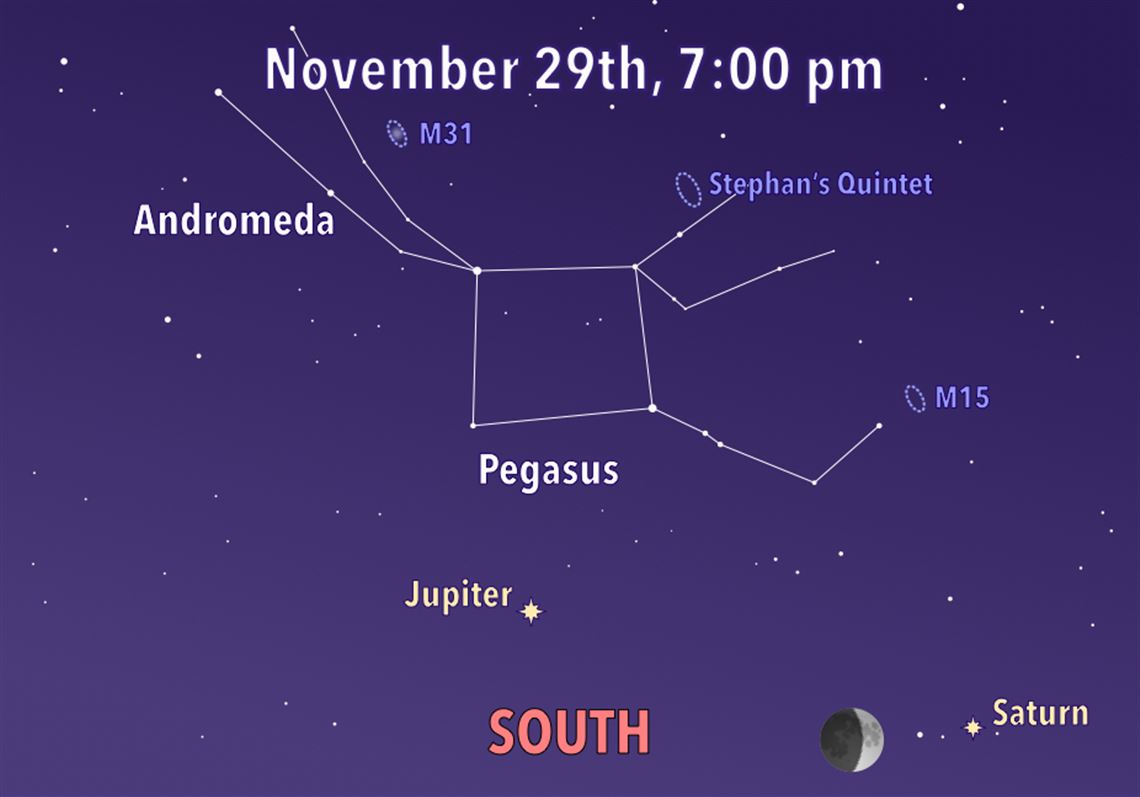Pegasus, the winged horse of Greek mythology, hasn’t yet flown from our night view. It is easy to spot a nearly symmetrical great square of stars that form the top half of the storied horse, one of autumn’s bright constellations.
Within and near the constellation are many deep space objects. The Pegasus globular cluster, M15, is located above and to the right of the square. Through binoculars it appears as a small and indistinct sphere, but it contains about 100,000 stars and is one of the most densely concentrated clusters. It’s also one of the most ancient in our galaxy, containing stars nearly 13 billion years old. Telescopes reveal luminous stars of hot blue and cooler golden-yellow.
Just north of the square is a close-knit collection of galaxies known as Stephan’s Quintet. These visually striking interacting galaxies were the first compact grouping of galaxies discovered. In distant time they’ll merge into one large elliptical galaxy, making them a fascinating target for scientific curiosity. The James Webb Space Telescope also has directed its gaze to observe their galactic interaction and the sparking of stellar formation.
Northeast from the Great Square of Pegasus, toward Cassiopeia’s “W” shape, is the small fuzzy patch of light of the Andromeda Galaxy. This is the farthest we can see without the aid of a telescope, and our closest spiral galactic neighbor.
First Published: November 29, 2022, 11:00 a.m.
















